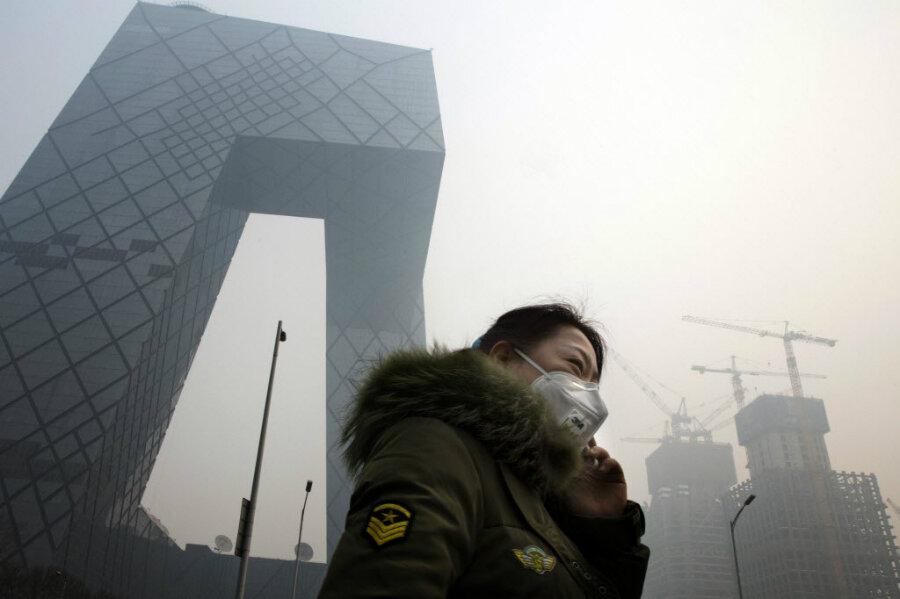Beijing eyes pollution, but is the government transparent enough?
Loading...
Beijing’s government is increasingly turning to surveillance to control the city’s air pollution.
Drones, satellites, and sensors are being used, along with a computer program created by IBM to keep tabs on out-of-control pollution, according to Beijing’s environmental bureau.
After decades of growing industrialization in the city and years of government denials about the problem, officials say they are on board to make effective change.
But many still question whether the Communist country will use accurate information and overcome its reliance on the coal industry, despite commitments made last weekend during the United Nations' global climate summit outside Paris and in previous talks with the United States.
In July, Beijing’s government said it would launch reconnaissance networks to track pollution. Last week, Chinese officials declared the highest-level pollution alert ever issued in Beijing.
But this isn’t the first time the country has declared a war on emissions.
During the 2008 Beijing Olympics, the country shut down factories and restricted car travel in a successful attempt to clear Beijing's air. Yet by 2011, the government blamed a reoccurrence of the suffocating air quality on fog.
Public sentiment may now by a factor. A Pew Research study released last week said the vast majority of Chinese view air pollution as a major issue.
Beijing had more than 200 days of unhealthy air pollution in 2014 and 21 days of hazardous pollution. More than 75 percent of Beijing residents polled in a survey last spring say air pollution is a big problem.
Data on air quality is now more readily available and pollution is influencing tourism. Politicians are reversing their tactic of denying air pollution and promising change.
Policy shifts have followed suit. According to The New Yorker, the Communist Party now assesses local officials environmental records, while officials say they will impose harsher penalties on manufacturers who pollute.
Efforts like using the IBM software are part of a broader plan to integrate data collection from land, air, and space, though developers say the software has only a 75 percent accuracy rate on forecasting pollution, with hazardous levels now being reached at least four times a month in Beijing, according to Agence France-Presse (AFP).
In the long term, officials hope to use the software to pinpoint where the pollution is stemming from, according to Zhang Meng, an IBM scientist involved with the project.
Surveillance is supposed to be a key component to controlling air pollution. Herve Robin, a technology officer with Airvisual.com, told AFP that his company has been developing tools to monitor pollution and criticized the Chinese government for weak oversight, despite new pledges to crackdown on pollution.
In addition to surveillance, Beijing now posts instances of its air pollution enforcements, like fines on factories that have not adequately reduced pollution under new laws.
Nonetheless, Beijing uses only 40 monitoring stations compared to the thousands used in other high-pollution cities like Delhi. During the recent red alert issued to indicate dangerous air pollution levels, the first in Beijing’s history, only 12 inspectors were sent out to monitor local industries, Mr. Robin said.
Even as the Chinese government preached transparency in November, it banned data collected from air pollution monitors stationed at the US Embassy in Beijing.
"China’s continuing struggle to control and reduce air pollution exemplifies the government’s fear that lifestyle issues will mutate into demands for political change," said Mary Gallagher, an associate professor of political science at the University of Michigan, to Bloomberg News.





